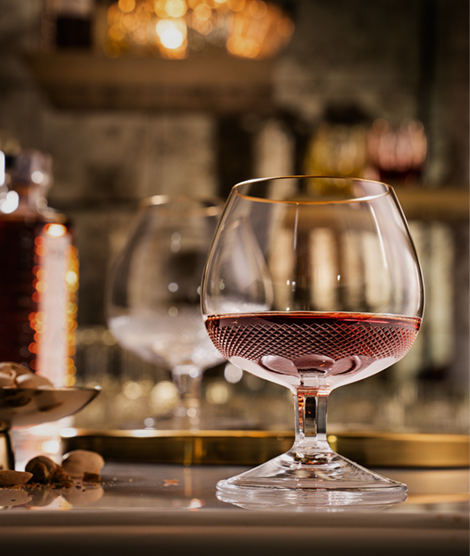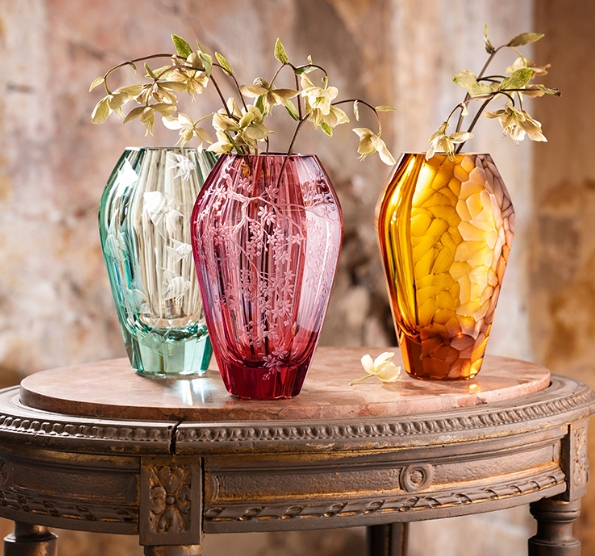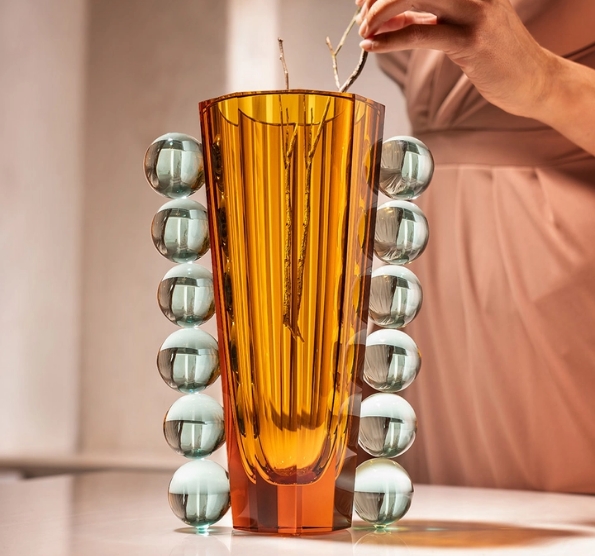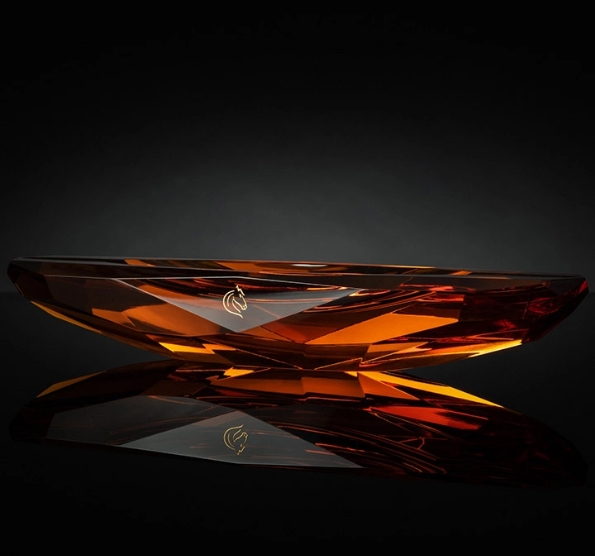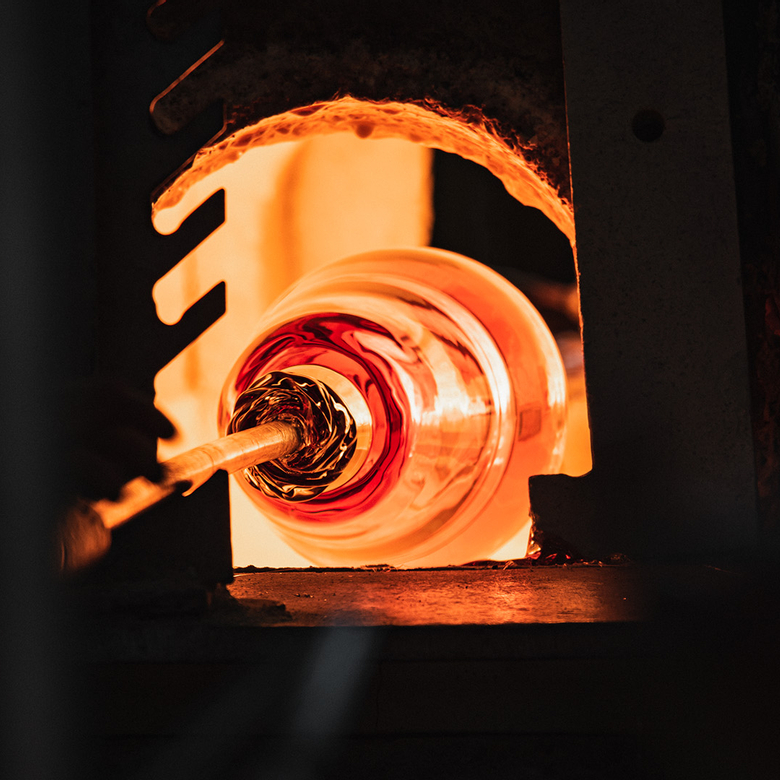Breadcrumbs navigation
- Home page
- About Moser
- Blog
- Play of Light and Sequence. How Is the New Pineapple Vase Born?
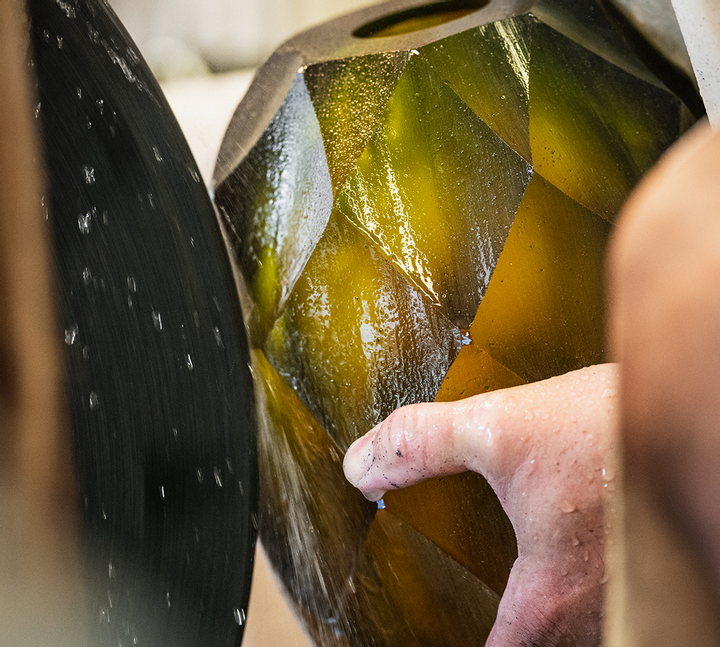
Play of Light and Sequence. How Is the New Pineapple Vase Born?
It represents friendship and hospitality, and it once used to adorn royal banquets. Pineapple distinguishes itself from other fruits not only by its symbolism, but also by its specific appearance and shape, conveyed by the flawless sequence of individual structures.
This extraordinary natural phenomenon has also inspired the artist Lukáš Jabůrek in designing a new vase for Moser. Its final form is preceded by hours of hand-cutting, care and craftsmanship, where every detail is meticulously considered. We took a closer look at the work of a master cutter.
"The key is creating a deep cut, which gradually gives shape to a vase holding a close resemblance to this fascinating fruit aesthetically," explains Milan Tůma, a master cutter. He has been part of the Moser company for over 45 years, and the last product that reflects decades of his refined skill is the stunning Pineapple vase, designed by Lukáš Jabůrek, a prominent contemporary artist.
According to the renowned master cutter, it is crucial to achieve a mutual understanding between the cutter and the designer, only then is it possible to realise the designer's vision. He perceives Lukáš Jabůrek as a talented young artist, who stands out thanks to his bold ideas. Last but not least, the Pineapple would not have come to be without the master glassworker Milan Man, who began working at Moser in the second half of the 1980s.
Working With a Glass Cutting Machine
The Pineapple vase, made of honey-coloured topaz glass, is decorated by deep quadrangular honeycombs, which have been hand-cut. In this case, the glass cutter spends hours on modelling, which has to be approached with utmost precision and patience. At the same time, the following rule applies: once a piece of glass is removed, it cannot be returned. "Preparation is key, as the final result depends on it," notes Milan Tůma before continuing: "You must always carefully plan out the entire procedure, so that you do not perform any unnecessary cutting, or remove material without reason." First, he redraws the artist's designs onto the Pineapple, and divides them into individual segments thus forming a grid, wherein he then places specific cuts. The cutting of the Pineapple itself takes roughly one week.
 To achieve the proper pineapple effect, the vertical cutting method is used instead of the traditional horizontal cutting. This is done with a special glass cutting machine. "It has various vertical grinding disks of different sizes, ranging from roughly one to sixty centimeters," Milan Tůma explains. The grinding disks are distinguished from each other by their specific shapes; they may be pointed, straight, elliptical, or round. These allow an experienced master cutter – such as Milan Tůma – to create various effects and cuts of different depth.
To achieve the proper pineapple effect, the vertical cutting method is used instead of the traditional horizontal cutting. This is done with a special glass cutting machine. "It has various vertical grinding disks of different sizes, ranging from roughly one to sixty centimeters," Milan Tůma explains. The grinding disks are distinguished from each other by their specific shapes; they may be pointed, straight, elliptical, or round. These allow an experienced master cutter – such as Milan Tůma – to create various effects and cuts of different depth.
The Perfect Fibonacci Sequence
Similarly to a pine cone, the pineapple fruit is also characterised by the so-called Fibonacci sequence. It is a phenomenon of a perfect sequence, also known as the golden ratio, where small structures are arranged in spirals. "The grid cannot be too fine, coarse, or large. You need to find a way to adjust the given segments' width to be just right," Milan Tůma explains and also points out the fact that in such a procedure, the grinding force has to be controlled even more closely to ensure that the material is not ground through.

The thirty centimetres tall Pineapple vase is partly a sequel to the iconic Pear, which also immediately catches your eye by its impressive colourfulness. The cut and the skill of the cutter also influence how much the colours will stand out. "It is difficult to precisely determine in advance what play of light and colour will emerge. You can picture any product in your head based on the sketch, but in the end, the final result is still always a surprise. In the case of the Pineapple, it is a very pleasant one at that," adds the master cutter, whose name has been tied to Moser since the year 1976.
The Pineapple vase simply embodies the masterful skill of Moser's glassmakers and glass cutters. It also proves that when a vision meets hard-work, a vase is created, which does not resemble the tropical fruit only in shape, but also in the emphasis it puts on detail and overall aesthetics.
Who was involved in the creation of the first Pineapple?
Lukáš Jabůrek, glass designer
He is among the most sought-after glass artists today. He graduated from the Technical College for Glassmaking in Nový Bor, and he has obtained experience in various professions at Moser. Starting as an outstanding glass cutter, he has worked himself up to become the art director of the glass factory, and he held this position until the year 2018. As a designer, he can pride himself in winning the People's Choice category in the Czech Grand Design Awards 2012 as the designer of Kolorit and Pear collections. He was also awarded the prestigious Tableware International Award of Excellence. His recent creations include the impressive Clouds vases, or the Pineapple.
Milan Tůma, master glass cutter
His Moser journey began in the second half of the 1970s, when he joined the production department as a cutter. Thanks to his talent, he joined Moser's internal development studio. He was involved in the creation of new collections, and he worked alongside renowned artists from Czechia and abroad, led by René Roubíček. "We created various compositions together. I have very fond memories of him, he was an amazing artist, who had a great eye for material and shape," says Milan Tůma with a smile. As a master glass cutter, he has created a number of unique and extraordinary cut pieces.
Milan Man, master glassmaker
His school internship eventually grew into his lifelong career and passion. Milan Man joined Moser in the year 1986 as a glassblower and helper. Today, he is a renowned master glassmaker, who is especially keen on working on larger pieces, where, in addition to skill, the physical and mental stamina of the glassmaker is also essential. In his current position, he sees to good teamwork and communication, so that everything works well within the team.
